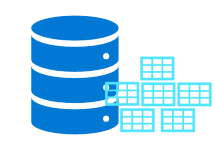Operational and analytical data
Operational data is usually transactional data that is generated and stored by applications, often in a relational or non-relational database. Analytical data is data that has been optimized for analysis and reporting, often in a data warehouse.
One of the core responsibilities of a data engineer is to design, implement, and manage solutions that integrate operational and analytical data sources or extract operational data from multiple systems, transform it into appropriate structures for analytics, and load it into an analytical data store (usually referred to as ETL solutions).
Streaming data

Data engineers often need to implement solutions that capture real-time stream of data and ingest them into analytical data systems, often combining the real-time data with other application data that is processed in batches.
Data pipelines

Data pipelines are used to orchestrate activities that transfer and transform data. Pipelines are the primary way in which data engineers implement repeatable extract, transform, and load (ETL) solutions that can be triggered based on a schedule or in response to events.
Data lakes

A data lake is a storage repository that holds large amounts of data in native, raw formats. Data lake stores are optimized for scaling to massive volumes (terabytes or petabytes) of data. The data typically comes from multiple heterogeneous sources, and may be structured, semi-structured, or unstructured.
The idea with a data lake is to store everything in its original, untransformed state. This approach differs from a traditional data warehouse, which transforms and processes the data at the time of ingestion..
Data warehouses

A data warehouse is a centralized repository of integrated data from one or more disparate sources. Data warehouses store current and historical data in relational tables that are organized into a schema that optimizes performance for analytical queries.
Data engineers are responsible for designing and implementing relational data warehouses, and managing regular data loads into tables.
Apache Spark

Apache Spark is a parallel processing framework that takes advantage of in-memory processing and a distributed file storage. It's a common open-source software (OSS) tool for big data scenarios.
Data engineers need to be proficient with Spark, using notebooks and other code artifacts to process data in a data lake and prepare it for modeling and analysis.
Data engineering in Microsoft Azure

Microsoft Azure includes many services that can be used to implement and manage data engineering workloads.
Operational data is generated by applications and devices and stored in Azure data storage services such as Azure SQL Database, Azure Cosmos DB, and Microsoft Dataverse. Streaming data is captured in event broker services such as Azure Event Hubs.
This operational data must be captured, ingested, and consolidated into analytical stores; from where it can be modeled and visualized in reports and dashboards. These tasks represent the core area of responsibility for the data engineer.
The core Azure technologies used to implement data engineering workloads include:
- Azure Synapse Analytics
- Azure Data Lake Storage Gen2
- Azure Stream Analytics
- Azure Data Factory
- Azure Databricks